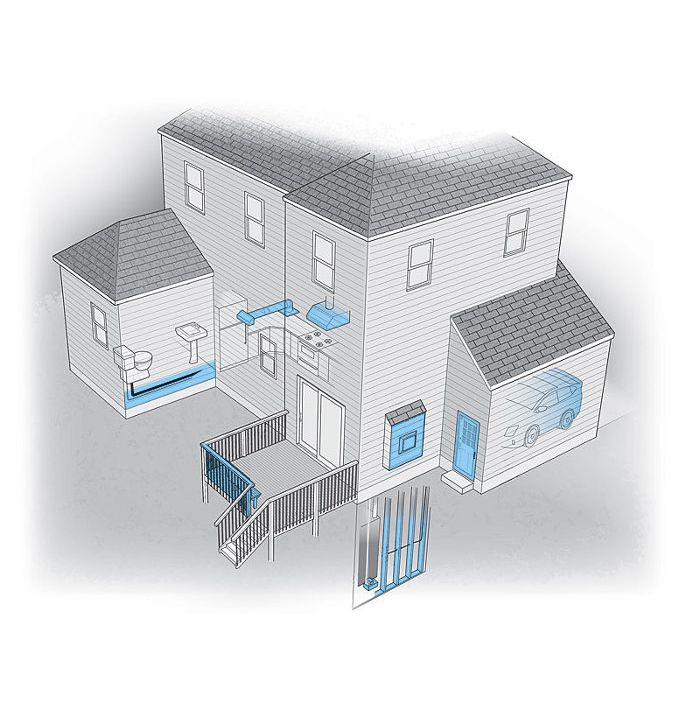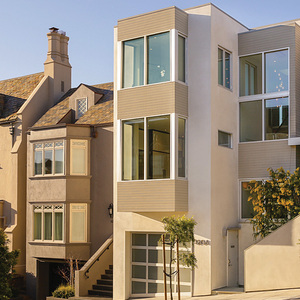Illustrated Guide to Code Changes
Here’s what you can expect in the 2015 IRC.

Synopsis: Every three years, the International Residential Code (IRC) is updated. The 2015 version of the IRC includes hundreds of changes and new provisions. Code expert and building official Glenn Mathewson has compiled a guide showing the new code’s most notable changes, with an illustration that helps to show each change being discussed. The changes are grouped in four enforcement areas as they appear in the code book: building, electrical, decks, and plumbing and mechanical. This important feature article discusses 20 significant code changes for 2015.
The latest building-code requirements typically start becoming the law of the land a year after they’re published, so it won’t be long before you’ll need to comply with new provisions in the 2015 International Residential Code (IRC). A quick shuffle through the 902 pages of the new code book reveals that most have a black bar in the margin, signaling a change. There are hundreds of changes, but most are editorial, intended to make the respective provisions easier for builders to understand and easier for code officials to interpret. Still, there are significant changes of substance as well. Here, I highlight those that I think will have the most far-reaching effects and the ones that code officials and builders should be most aware of. The changes are grouped in four categories: building, plumbing and mechanical, electrical, and decks.
BUILDING
Fire and injury prevention is still the emphasis, but the code also reflects changes in society’s attitudes. Recent revisions to the IRC brought on by tiny-house advocates demonstrate that anybody can lobby the International Code Council—which is comprised of municipal code officials and interested parties—for changes.
ELECTRICAL
Electrical codes in the IRC come from the National Electrical Code (NEC), published by the National Fire Protection Association (NFPA). Like the IRC, this code is on a three-year cycle; however, it comes out one year earlier, so it’s the 2014 NEC provisions that are found in the 2015 IRC.
DECKS
Although previous versions of the code glossed over deck construction, elevated wood decks are fully covered in the 2015 version of the IRC. No longer do builders and inspectors have to make their best guess as to a deck’s compliance; now the rules are spelled out fully.
PLUMBING AND MECHANICAL
Many of the plumbing-code changes will be cheered by plumbers everywhere. The code also addresses increased attention to water conservation with seven new pages describing rainwater and gray-water collection.
The code process
The International Code Council (ICC) publishes a new version of the International Residential Code (IRC) every three years. Additions and other changes are worked out ahead of the publishing date at annual hearings that move around the country. Anyone can attend the hearings or follow the proceedings live online.
Anyone can submit code-modification proposals and testify in favor of or in opposition to any code proposal during any hearing. Individuals and corporations can join the ICC, but only governmental ICC members (those members who work in municipal-code enforcement) can vote to complete the code-development cycle. Once the new version of the IRC is published, it’s up to the individual states and municipalities to adopt it.
The adoption process and schedule are unique to each state, municipality, and code-enforcement office. In many instances, a state or municipality will keep a previous version of the code in place well after a new version has been released. For example, some states will adopt the 2015 IRC by the end of 2016, but the new code is unlikely to be mainstream until 2017. Hearings for the 2018 IRC will occur throughout 2016, with the final vote occurring in October 2016.
For more drawings and details, click the View PDF button below:
Fine Homebuilding Recommended Products
Fine Homebuilding receives a commission for items purchased through links on this site, including Amazon Associates and other affiliate advertising programs.

Code Check 10th Edition: An Illustrated Guide to Building a Safe House

A Field Guide to American Houses

A House Needs to Breathe...Or Does It?: An Introduction to Building Science






















